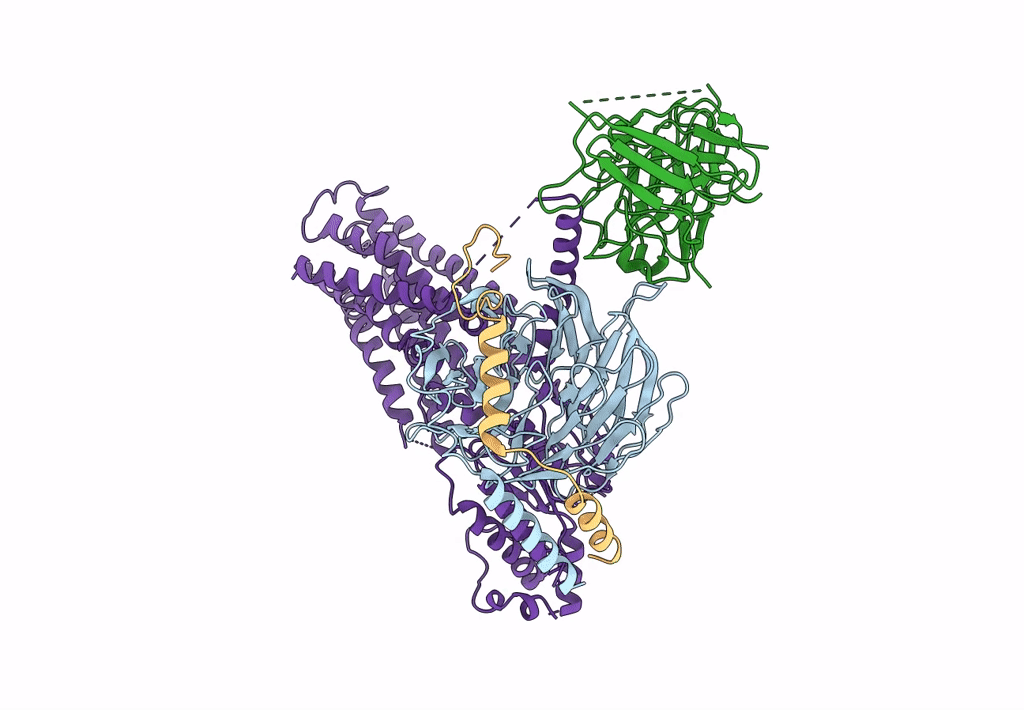
Deposition Date
2023-06-28
Release Date
2023-10-04
Last Version Date
2025-05-28
Entry Detail
PDB ID:
8TB0
Keywords:
Title:
Cryo-EM Structure of GPR61-G protein complex stabilized by scFv16
Biological Source:
Source Organism:
Homo sapiens (Taxon ID: 9606)
Escherichia coli (Taxon ID: 562)
Escherichia coli (Taxon ID: 562)
Host Organism:
Method Details:
Experimental Method:
Resolution:
3.47 Å
Aggregation State:
PARTICLE
Reconstruction Method:
SINGLE PARTICLE


